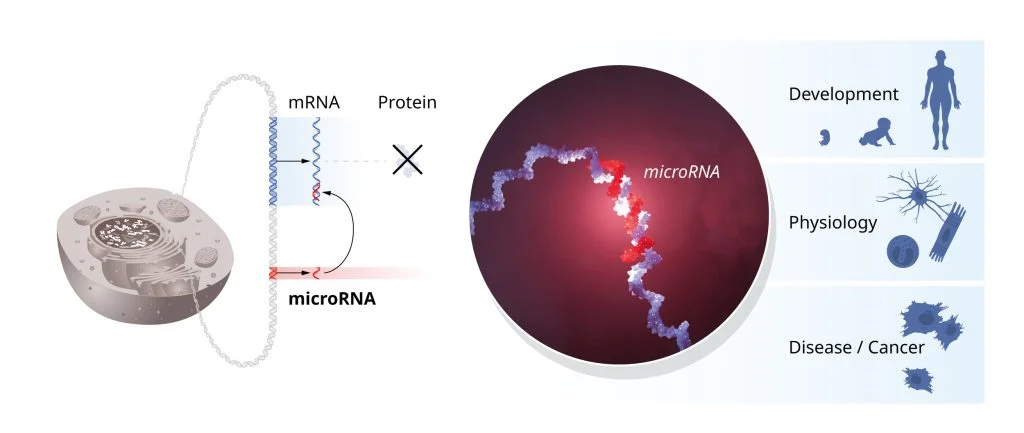A genome (the complete set of gene present in an organism) is the main constituent of our chromosomes. We have 24 pairs of chromosomes in each and are made up of many cells. The genome can be seen as an instruction manual for life. Each cell in our body will have the same set of instruction manuals. I guess most of you reading this article would know this. But have you ever wondered why each cell type produces a specific set of proteins and has a definite set of functions? What makes them unique? As discovered by two Nobel Laureates, it is due to gene regulation. Let’s dive deep and explore their groundbreaking discoveries.
Transcription factors regulate gene expression.
Discovered in the 1960s, they are a specialized group of proteins that bind to a specific gene and control its expression. This made everyone think the gene regulation problem has been solved. However, the story doesn’t end here due to the discovery of yet another mechanism that is superior and evolutionarily preserved.
How a tiny worm helped in a breakthrough?
Despite its small size (1 mm), C.elegans have several specialized cells like neurons, muscle cells, etc. just like humans. Victor Ambros and Gary Ruvkun were interested in two genes (mutants) lin 4 and lin 14. Both mutants exhibited abnormal gene regulation. What they already knew was that lin 4 inhibited lin 14. But how it inhibited was the question. They found that “the lin-4 microRNA turns off lin-14 by binding to the complementary sequences in its mRNA, blocking the production of lin-14 protein”. A new mode of gene regulation has been introduced now.
Micro RNA (miRNA)- the hero responsible for gene regulation

Victor Ambros and Gary Ruvkun were jointly awarded the Nobel Prize in Physiology or Medicine for their ground-breaking mi RNA discovery. They identified that mi RNA plays an essential role in gene regulation and is required by all organisms including humans. Looking back at the question we encountered previously, have you ever wondered why each type of cell produces a specific set of proteins and has a definite set of functions? miRNA’s (our body produces thousands of these) precisely regulates the gene activity such that only the correct set of proteins is synthesized in a specific cell type. This is what makes each cell specialized. We have different types of cells like neurons, intestinal cells, cardiac cells, etc. each with their unique protein set and function. This specialization of cells can be attributed to miRNA.
Gene regulation not just applies to cell types but also to changing environmental conditions. Abnormal gene regulation can lead to a range of diseases including cancer, diabetes, and autoimmunity. it is also involved in ageing.
It took time to convince the scientific community regarding their breakthrough but eventually accepted. At present, hundreds of miRNAs have been discovered.
What’s next?
In addition to discovering miRNAs, researchers have been trying to find the origin of miRNAs and how they bind to the complementary mRNAs.
Work on miRNA’s started over hundreds of years back. But, it is a crucial component of our genomic research. Cells and tissues do not develop normally without miRNAs. Abnormal production of miRNAs has resulted in a range of diseases including cancer, vision and hearing loss, and skeletal disorders. The work on C elegans and the results obtained were unexpected, but it gave us a new perspective about understanding gene regulation.
I would love to hear your comments on their groundbreaking discovery.

Great read, thanks!